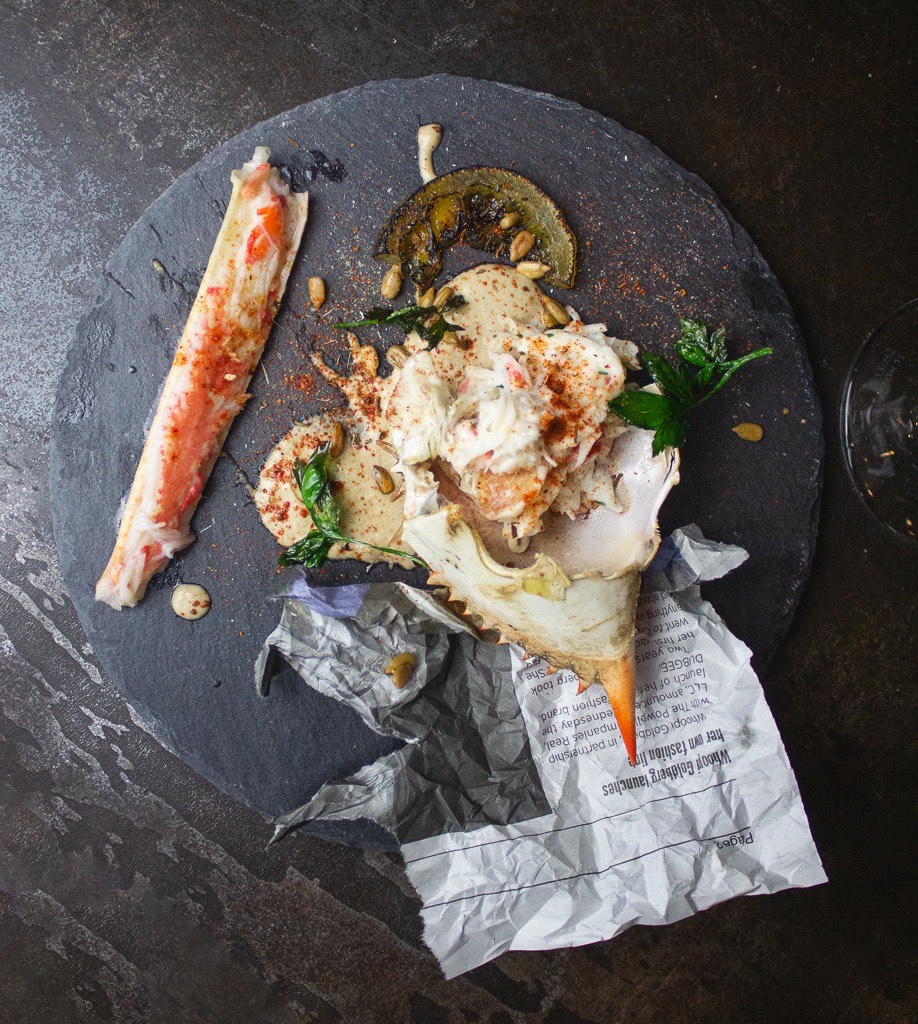
Back in his hometown of Philadelphia, culinary artist Omar Tate takes an unplanned break from a non-stop, multi-year journey to discover his cultural identity as a northern migrant of African American descent. Moving slower, eating better and getting more restful sleep, he speaks about Honeysuckle Pop-Up, a work in progress and process.
What set you on your journey?I wanted to control my destiny. I knew if I became a cook, I could become a chef. If I became a chef, I could become a business owner. If I became a business owner, I could become an entrepreneur. It was a path to success.
What was your training? I learned on the job. I am pretty studious. But my first real position in a kitchen was culture shock. I was the only Black person. I worked at a private golf club outside of Philadelphia. I learned some Spanish to communicate with the Mexican staff and to fit in.
Then I moved to NYC and got a job at Michelin-starred A Voce. We made great food, but the pace was insane. I missed caring about food and where it came from.
I had an epiphany while working at Once Upon a Tart. Its owner, Alicia Walter, was really inspired by womanhood. She amplified the voices and power of women through food. That’s what I was chasing but with things that didn’t belong to me culturally. I wanted to make food that represented me. I immersed myself in the Schomburg Center for Research in Black Culture. I told the librarians I wanted to learn about the food and culture of northern African American migrants. One of the saddest things about COVID-19 is that I can’t get to a library. I draw inspiration, too, from literature and writers like James Baldwin and Zora Neale Hurston, among others.
Then what? In 2018, I took off for the South, with the idea of studying Black food from its source. My first stop and on day one in New Orleans, I entered a small bar. A woman there offered me a bowl of red beans and rice. Everyone in New Orleans eats red beans and rice. She just gave it to me, wanting nothing in return. I hadn’t experienced that type of generosity. I realized there and then that the people around food are what’s important, not the food.
I went to Charleston, from where my family migrated in 1929. We still have houses in our name. I got a job in a bar around the corner from a family home. I stayed a month, doing research in the city archives. I found an 18th century pamphlet relating to a slaveowner from Orangeburg who had enslaved my ancestors. I visited the plantation. In a dilapidated cabin, I retrieved three artifacts, which tell that plantation’s story: a shovel, representing work; a wooden sculpture, representing the mind; and a medicine bottle, representing the enslaver, who was a physician. I was so blessed to find these things.
Tell us about Honeysuckle Pop-Up. Back in NY, while working as sous-chef at The Henry, I launched Honeysuckle. I have always written, especially poetry. The food comes out of my writing or it becomes my writing. Fried chicken, macaroni and cheese, collard greens, on the surface, are associated with Black food. They’re not on my menu. My poetry accompanies each meal and substantiates what’s on the plate. I curate the entire space with my art, giving guests a multidimensional, cultural experience. Remnants on a South Philly Stoop was inspired by childhood memories of summer evenings in Philadelphia, sitting on the stoop, eating blue crab and sunflower seeds and spitting out the empty shells. A slate slab, my plate, represented the concrete steps. I served crab, candied lemon rind and sunflower puree. Torn pieces of the Philadelphia Tribune, the oldest Black newspaper in circulation, were a garnish. Kool Aid, made with freeze-dried fruit, sugar and citric acid, is a constant. This is Black food to me. It’s what I ate and drank growing up. It represents my Black life. I combat the stigma of Kool Aid and its disenfranchisement of Black folk while celebrating the joy I remember. I always serve homemade honeysuckle ice cream. The honeysuckle bush in front of my childhood row house connects me to a time of innocence.
Though now itinerant, everything about Honeysuckle says, “welcome to my home.” Guests become part of the story by ingesting it. My work is a culinary version of high art. It’s personal, intimate and intentional. When Black people come, they cry. It’s like church. For others, it blows their minds. I validate Black culture as part of American culture and celebrate Black people in a way we have never before been celebrated.



